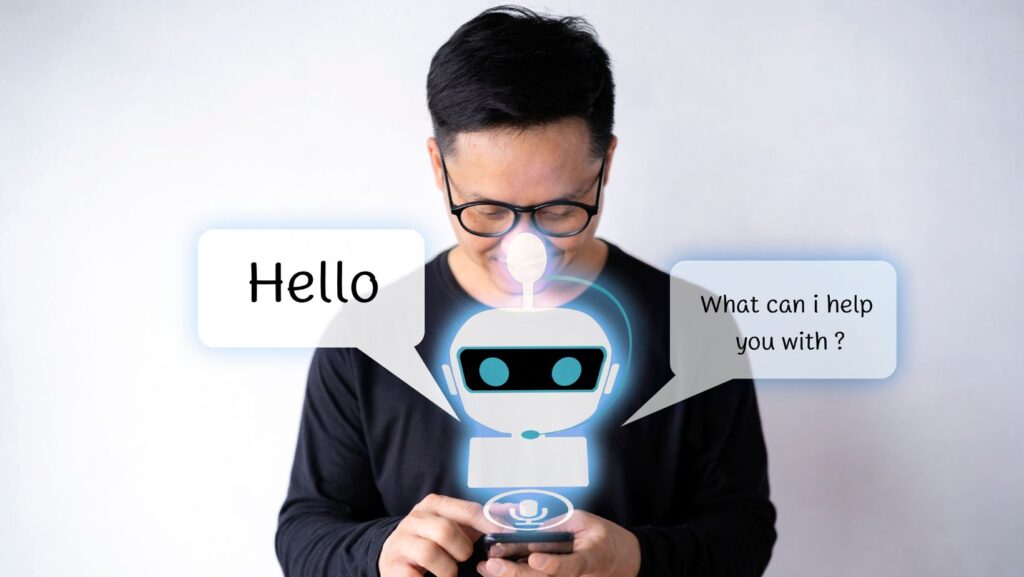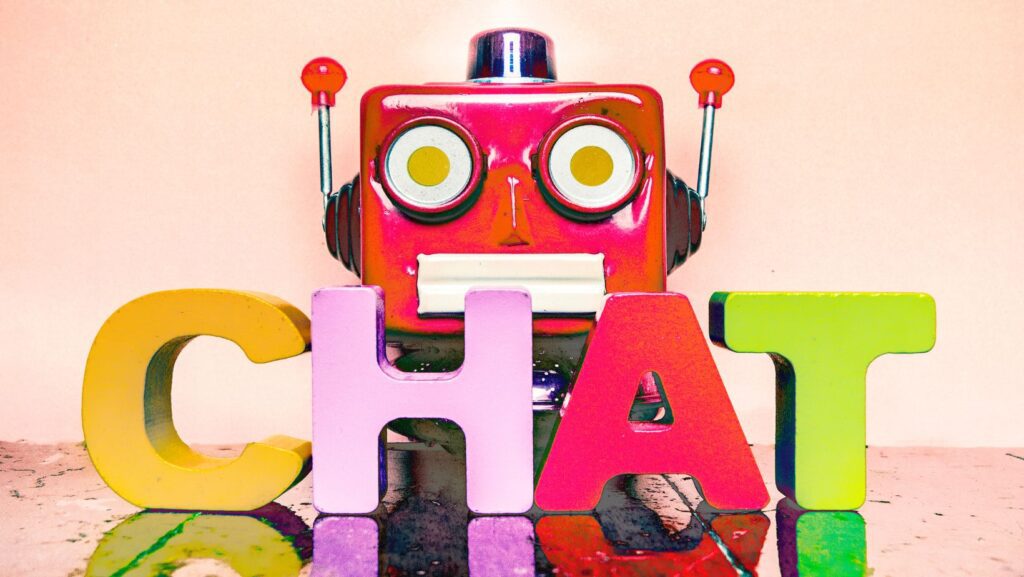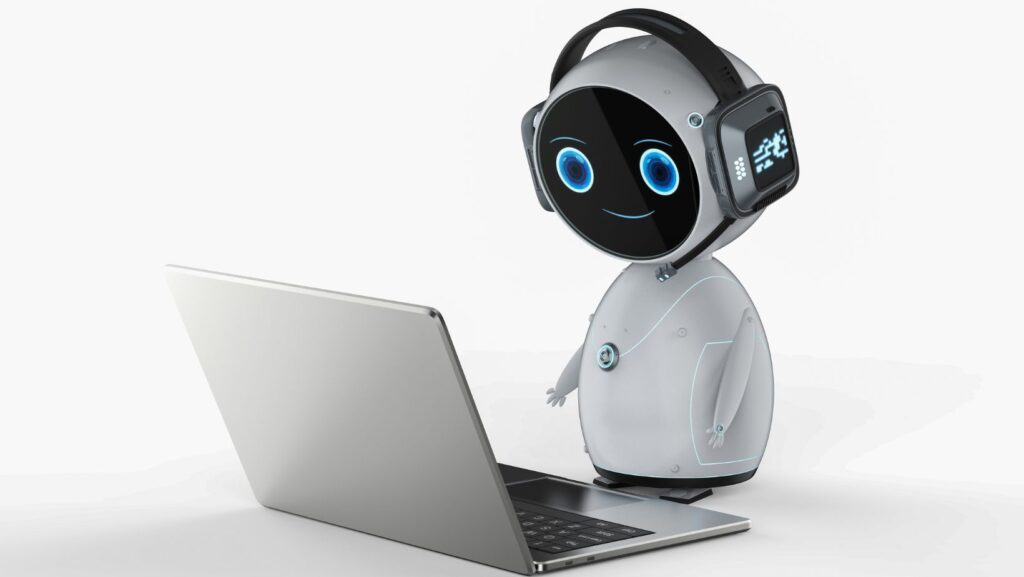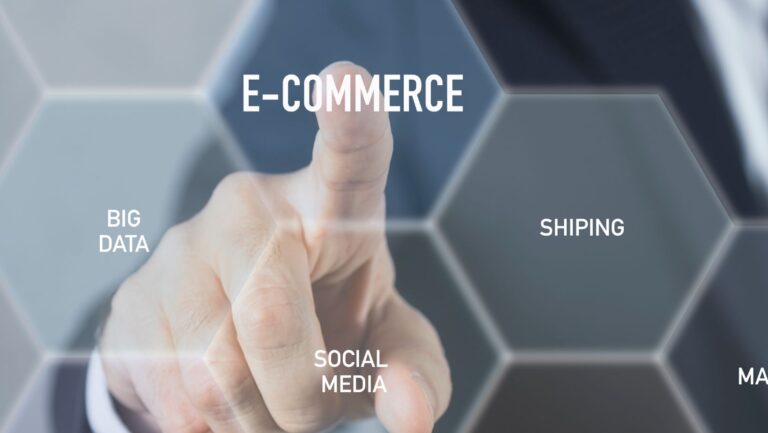Chatbots Unleashed: Ways to Transform Customer Engagement

Chatbots, in recent years, have developed into a valuable resource for organizations of all sizes. A chatbot is a software application that simulates human speech.
It communicates with people via messaging platforms, mobile apps, or websites, answering questions, delivering information, and even carrying out tasks.
Chatbots’ roles go beyond simply answering questions.
They are an essential aspect of customer engagement and support, providing individualized interactions, fixing problems quickly, and being available 24 hours a day, seven days a week.
They assist firms in providing better service, increasing customer happiness, and developing long-term partnerships.
This post will discuss how chatbots can be utilized effectively for customer engagement and assistance. It provides ideas for leveraging chatbots, includes successful case stories, and addresses potential implementation issues.
Understanding Chatbots

Chatbots, short for “chat robots,” are artificial intelligence (AI) software that can emulate a natural language discussion (or chat) with a user.
This dialogue can take place via messaging apps, internet, mobile apps, or even over the phone. Chatbots evaluate user input and respond with pre-programmed or dynamically produced responses based on the question.
Chatbots are classified into two types: rule-based and AI-powered. Rule-based chatbots operate according to predefined rules and respond to specified requests.
They are ideal for dealing with simple chores. Chatbots powered by AI, on the other hand, use machine learning and natural language processing to understand and respond to a wide range of inputs, resulting in a more nuanced, human-like dialogue.
Chatbots are becoming increasingly important in today’s digital society. Chatbots efficiently meet the growing need for instant support and tailored service.
They can manage several consumer conversations at the same time, saving human agents time and lowering operating costs.
Benefits of Using Chatbots for Customer Engagement and Support
24/7 Customer Support
One of the most significant advantages of chatbots is their availability. Unlike human agents, chatbots can provide customer support 24/7, ensuring customers receive assistance whenever they need it, improving overall customer experience.
Instant Response Time
Customers expect quick responses. Chatbots can provide instant replies to customer queries, reducing waiting time and increasing customer satisfaction.
Personalization
Chatbots can personalize conversations based on user data, providing tailored product recommendations, personalized offers, and more. This level of personalization enhances customer engagement and fosters loyalty.
Scalability
Unlike humans, chatbots can handle an unlimited number of conversations simultaneously. This scalability ensures that customer queries are addressed promptly, even during peak hours or seasons.
Cost Efficiency
Chatbots can reduce operational costs by automating routine tasks, freeing up human agents to handle more complex queries. They also help reduce training costs as they don’t require extensive training like human agents.
Strategies to Leverage Chatbots for Customer Engagement and Support

Setting Clear Goals for Chatbot Integration
Before integrating a chatbot, it’s crucial to define what you want to achieve with it.
Whether it’s to reduce response time, increase customer satisfaction, or automate routine tasks, having clear goals can guide the development and implementation process.
Metrics to Define Business Goals
- Customer Satisfaction Rate (CSR): Measure the percentage of customers who rated their interaction with the chatbot as satisfactory or better. A high CSR indicates that your chatbot is meeting customer expectations.
- First Response Time (FRT): This measures the time it takes for the chatbot to respond to a customer’s first message. The goal is to reduce this time as much as possible to provide instant support.
- Resolution Time (RT): The time it takes for a chatbot to fully resolve a customer’s issue. A shorter resolution time could lead to higher customer satisfaction.
- Conversion Rate (CR): The percentage of interactions that lead to a desired outcome, such as a sale or sign-up. A higher conversion rate indicates that the chatbot is effectively driving users towards their business goals.
- Engagement Rate (ER): These measures how well the chatbot retains user interest, calculated by tracking metrics like the number of messages per conversation, conversation length, and return users.
- Containment Rate (ConR): The percentage of total inquiries fully managed by the chatbot without human intervention. A high containment rate signifies that your chatbot is successfully handling a significant portion of customer inquiries.
Routine Tasks for Chatbots
Customer Service Queries: Chatbots can handle routine queries like business hours, return policies, product details, etc.
Order Processing: Chatbots can assist users in placing orders, tracking their orders, and processing returns or exchanges.
Scheduling Appointments: For service-based businesses, chatbots can help schedule appointments, send reminders, and handle rescheduling requests.
Lead Qualification: Chatbots can ask preliminary questions to potential leads to assess their interest and fit for your product or service.
Feedback Collection: Chatbots can send out surveys or ask for customer feedback after a service interaction.
Product Recommendations: Based on user preferences and browsing behavior, chatbots can provide personalized product or service recommendations.
Each business is unique, so these goals and tasks may need to be adjusted based on your specific needs and circumstances.
Selecting the Right Chatbot Type Based on Business Needs

Depending on your business needs, you should select the right type of chatbot. If your needs are straightforward, a rule-based chatbot might suffice.
But if you want to provide more nuanced customer interactions, an AI-powered chatbot would be a better fit.
List of criteria to consider when selecting the right chatbot type based on business needs
Nature of Customer Queries: If your customer queries are straightforward and revolve around specific topics, a rule-based chatbot may suffice. But if your queries require understanding of context and natural language, an AI-powered chatbot would be better.
Complexity of Tasks: Rule-based chatbots are ideal for simple, routine tasks such as answering FAQs, booking appointments, or sending reminders. For more complex tasks that require understanding user intent and carrying out multi-step procedures, AI-powered chatbots are more appropriate.
Volume of Customer Interactions: If your business handles a large volume of customer interactions simultaneously, an AI-powered chatbot would be more beneficial due to its ability to manage numerous conversations at once without compromising the quality of service.
Level of Personalization Required: If your business heavily relies on personalizing customer experiences, an AI chatbot that can learn from past interactions and tailor conversations accordingly would be the optimal choice.
Budget: Rule-based chatbots are typically cheaper and easier to develop, while AI-powered chatbots require more resources and expertise, thus are more expensive. Consider your budget constraints while making a choice.
Scalability: If your business is rapidly growing or experiences significant fluctuations in customer service demand, an AI chatbot that can easily scale up or down to meet changing needs would be ideal.
Integration with Other Systems: If you need a chatbot that can integrate with your existing CRM, ERP, or other software systems, ensure the chatbot you select has the capability to do so.
Compliance Requirements: Depending on your industry, you may have specific compliance requirements (like HIPAA in healthcare). Make sure the chatbot you select meets these standards.
Multilingual Support: If your business operates in multiple regions or countries, choose a chatbot that can support multiple languages to cater to a diverse customer base.
Future Upgrades: Consider the potential for future upgrades or additional functionalities. AI-powered chatbots tend to offer more flexibility and room for enhancements as your business evolves.
Each of these criteria plays a critical role in determining the right chatbot type for your business. It’s crucial to assess your unique business needs and objectives before planning.
Designing an Engaging User Experience
The success of a chatbot largely depends on the user experience it provides. Ensure the chatbot is easy to use, responsive, and provides accurate information.
Consider integrating rich media like images, videos, and emojis to make the interactions more engaging.
While chatbots aren’t humans, they should still strive to mimic human conversation as closely as possible.
Using natural language processing, your chatbot can understand the context and nuances of a conversation and respond accordingly.
Case Studies: Successful Use of Chatbots for Customer Engagement
Case Study 1: Sephora
Sephora, a leading beauty retailer, saw an opportunity to leverage chatbot technology to elevate their customer experience. The company introduced a chatbot on Facebook Messenger with the aim of offering personalized product recommendations.
The chatbot was designed to simulate a conversation with a personal beauty advisor. It would ask the user a series of questions, such as their skin type, preferred product type, and price range.
Based on these responses, the bot would then provide a list of products that matched the user’s preferences.
The customer could then click on the suggested product and be directed to the Sephora website to complete their purchase.
Not only did this provide a more engaging and personalized shopping experience, but it also made the product discovery process much easier and more convenient for customers.
Sephora experienced an increase in customer engagement, with more people interacting with the brand and making purchases.
The chatbot also proved to be a valuable tool for data collection, allowing Sephora to better understand their customers’ preferences and shopping behaviors.
Case Study 2: Domino’s Pizza
Recognizing the increasing prevalence of online food ordering and the potential of chatbot technology, Domino’s Pizza implemented a chatbot named “Dom” on Facebook Messenger.
Dom was designed to streamline the pizza ordering process.
Once a customer initiated a conversation with Dom, the bot would ask them what they would like to order.
Customers could either type in their order or choose from a menu of popular items. Dom would then confirm the order details, collect the customer’s delivery information, and facilitate the payment process, all within the Messenger platform.
The introduction of Dom proved to be a game-changer for Domino’s.
Not only did it simplify the ordering process and make it more convenient for customers, but it also reduced the workload for Domino’s customer service representatives, allowing them to focus on more complex queries.
By offering a novel and engaging ordering experience, Dom helped to increase customer loyalty and differentiate Domino’s from its competitors.
Learnings from the Case Studies
These case studies illustrate the transformative potential of chatbots for customer engagement and support.
They demonstrate that with careful planning, thoughtful design, and strategic implementation, chatbots can significantly enhance the customer experience, improve operational efficiency, and drive business growth.
These examples also highlight the importance of personalization and convenience in today’s digital customer service landscape.
Whether it’s recommending the perfect beauty product or simplifying the pizza ordering process, chatbots can provide immense value by catering to individual customer needs and making their interactions with the brand more enjoyable and seamless.
Challenges in Implementing Chatbots and How to Overcome Them

Understanding and Addressing Common Challenges
Implementing chatbots is not without challenges. These can include technical issues, privacy concerns, and resistance from employees or customers.
Understanding these challenges and addressing them proactively can ensure a successful chatbot implementation.
Best Practices for Overcoming These Challenges
To overcome these challenges, ensure that your chatbot is thoroughly tested before launch to minimize technical glitches.
Also, ensure that you comply with all relevant data privacy laws to build trust with your customers. Lastly, provide adequate training and support for your employees to ensure they understand and accept the new technology.
Future Trends in Chatbot Technology for Customer Engagement
Chatbots will grow more sophisticated and capable as AI and machine learning technologies progress, like OpenAI ChapGPT, Microsoft Bing, and Google Bard.
They will be able to better understand and respond to difficult enquiries, anticipate consumer demands, and deliver more personalized service.
With the rise of voice assistants such as Alexa and Siri, voice-enabled chatbots are on the increase.
These chatbots provide a hands-free, conversational experience that has the potential to increase client engagement.
Chatbots will be able to forecast client requests in the future, rather than only respond to them.
Chatbots will proactively suggest answers even before a client raises an issue by evaluating previous encounters and customer behavior, significantly improving the customer experience.
Final Thoughts

Chatbots are a powerful corporate tool that provides several benefits such as 24/7 service, rapid responses, personalization, scalability, and cost efficiency.
They may greatly improve customer engagement and support with the appropriate techniques.
As chatbot technology advances, firms who efficiently adapt and incorporate these tools will gain a competitive advantage.
Chatbots have enormous potential, which we are only now beginning to realize.
Businesses may use chatbots to provide greater customer care, strengthen customer connections, and drive growth by staying up to date on the latest trends and best practices.
References
When diving into the world of chatbots, it’s vital to consult reputable sources.
Academic papers, technology blogs, industry reports, and case studies from firms that have successfully used chatbots can all give useful information.
Engaging with industry leaders, attending webinars, and participating in online forums will also enhance your awareness and keep you up to date on the newest trends and advances in chatbot technology.
Academic Journals
- Artificial Intelligence (Elsevier)
- Journal of Artificial Intelligence Research (JAIR)
- Artificial Intelligence and Law (Springer)
Technology Blogs
- TechCrunch AI Section: Offers insights into AI’s latest trends, including chatbots.
- VentureBeat AI: It covers the most significant news, events, latest trends, and breakthroughs in AI.
- Towards Data Science: A Medium publication sharing concepts, ideas, and codes related to data science and machine learning, including chatbots.
Industry Reports
- Gartner: Known for its ‘Magic Quadrant’ reports, Gartner provides detailed insights into various technology sectors, including AI and chatbots.
- Forrester: Offers in-depth market research reports about various sectors, including AI and customer service technologies.
- IDC: Provides global market research, analysis, and advisory service to the IT industry.
Case Studies and White Papers
- IBM Watson: Offers several case studies about companies using their AI and chatbot technology.
- Microsoft AI: Provides case studies and white papers about their AI implementations, including chatbots.
- Google AI: Provides research papers and resources on their AI projects, including Dialogflow, their chatbot building platform.
- OpenAI: As the organization behind the development of GPT (Generative Pretrained Transformer) models, including GPT-3 and ChatGPT, OpenAI provides extensive research papers and resources about these state-of-the-art language processing AI models.
Webinars and Online Courses
- Coursera: Offers courses on AI, machine learning, and sometimes specific ones on chatbots.
- edX: Similar to Coursera, edX offers various courses related to AI and machine learning.
- Udemy: This platform has several courses dedicated to building chatbots.
Online Forums and Communities
- Reddit (r/artificial, r/MachineLearning): These subreddits often have discussions on the latest developments in AI and chatbots.
- Stack Overflow: A platform where developers share their challenges and solutions, including topics on chatbots.
- AI Alignment Forum: A place where AI researchers and enthusiasts discuss the latest topics in AI.
While these sources are generally reliable, it’s always a good idea to cross-check the information and ensure it’s up to date.
Final Thoughts
Chatbots are altering consumer interaction and support landscape. They provide a plethora of benefits and potential for firms who embrace them.
Businesses may use chatbots to increase customer interaction, support services, and ultimately prosper by understanding their potential, adopting them properly, and overcoming the hurdles they offer.
FAQ
Q: What is a chatbot?
A: A chatbot is a software application that mimics human speech. It communicates with people via chat platforms, mobile apps, or websites, delivering information, answering inquiries, and carrying out tasks..
Q: What are the different types of chatbots?
A: Chatbots are classified into two types: rule-based and AI-powered. AI-powered chatbots employ machine learning and natural language processing to understand and respond to a wide range of inputs, whereas rule-based chatbots follow pre-determined rules and respond to particular commands.
Q: How can chatbots improve customer engagement and support?
A: Chatbots can improve customer engagement and support by providing 24/7 customer service, instant responses to queries, personalized interactions, and scalable customer support. They can also reduce operational costs by automating routine tasks.
Q: What are some successful case studies of chatbot implementation?
A: Sephora and Domino’s Pizza are examples of successful chatbot implementation. Sephora used a chatbot to provide personalized product recommendations, while Domino’s used a chatbot to simplify the pizza ordering process.
Q: What challenges might I face in implementing a chatbot?
A: Challenges in implementing chatbots can include technical issues, privacy concerns, and resistance from employees or customers. These challenges can be overcome by thorough testing, compliance with data privacy laws, and providing adequate training and support to employees.
Q: What are the future trends in chatbot technology?
A: Future trends in chatbot technology include the integration of advanced AI and machine learning, the rise of voice-enabled chatbots, and the development of predictive customer service capabilities.
Q: How can I select the right type of chatbot for my business needs?
A: The selection of the right type of chatbot depends on your specific business needs. If your needs are straightforward, a rule-based chatbot might be sufficient. However, if you need to handle more nuanced customer interactions, an AI-powered chatbot would be a better choice.
Q: What is the importance of designing an engaging user experience for chatbots?
A: An engaging user experience is crucial for the success of a chatbot. An easy-to-use, responsive chatbot that provides accurate information can significantly enhance customer engagement and satisfaction.
Q: How can chatbots provide personalized customer interactions?
A: Chatbots can use user data to personalize conversations, providing tailored product recommendations, personalized offers, and more. This level of personalization can enhance customer engagement and foster loyalty.
Q: How can chatbots contribute to cost efficiency in businesses?
A: Chatbots can reduce operational costs by automating routine tasks, freeing up human agents to handle more complex queries. They can also reduce training costs, as they don’t require extensive training like human agents.
Bio

Ronnie Patterson
Ronnie Patterson, founder of MagnÜron, is a multifaceted entrepreneur with a diverse background in music, electronics engineering, and engineering management. Drawing on experience across various industries, He offers expertise in SEO, operations, and strategy to help businesses thrive. Possessing a unique perspective and unwavering commitment to collaboration, and ideal partner for growth and success.





